[Goldenweeds and Rabbitbrush: The Genera Chrysothamnus and Ericameria East of the Cascade Mts. of Oregon and Washington]
Green Rabbitbrush, Sticky-flowered Rabbitbrush, Sticky-leaf Rabbitbrush, Yellow Rabbitbrush
Chrysothamnus viscidiflorus ssp. viscidiflorus
Synonyms: Chrysothamnus viscidiflorus ssp. pumilus, Chrysothamnus viscidiflorus ssp. stenophyllus, Chrysothamnus viscidiflorus ssp. typicus, Chrysothamnus viscidiflorus ssp. viscidiflorus var. viscidiflorus, Chrysothamnus viscidiflorus var. pumilus, Chrysothamnus viscidiflorus var. stenophyllus, Chrysothamnus viscidiflorus var. typicus, Chrysothamnus viscidiflorus var. viscidiflorus, Ericameria viscidiflora, Ericameria viscidiflora ssp. viscidiflora, Ericameria viscidiflora var. stenophylla
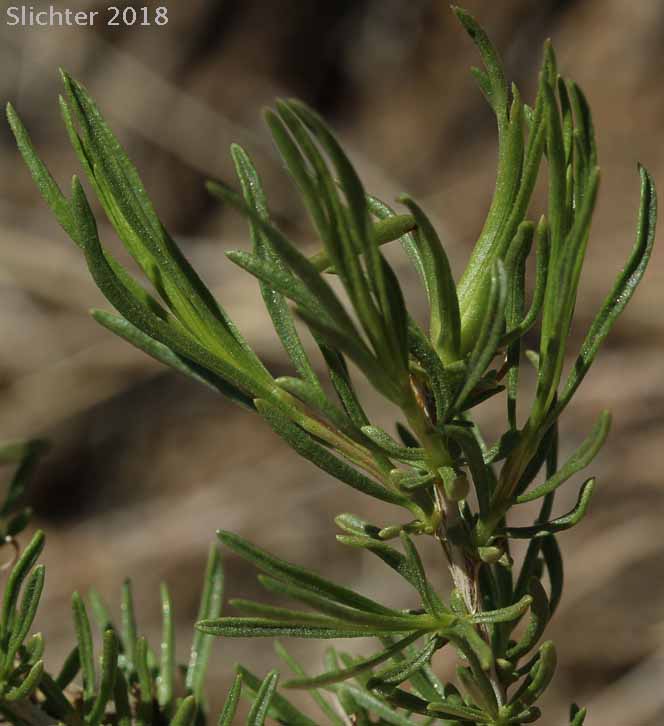 -
- 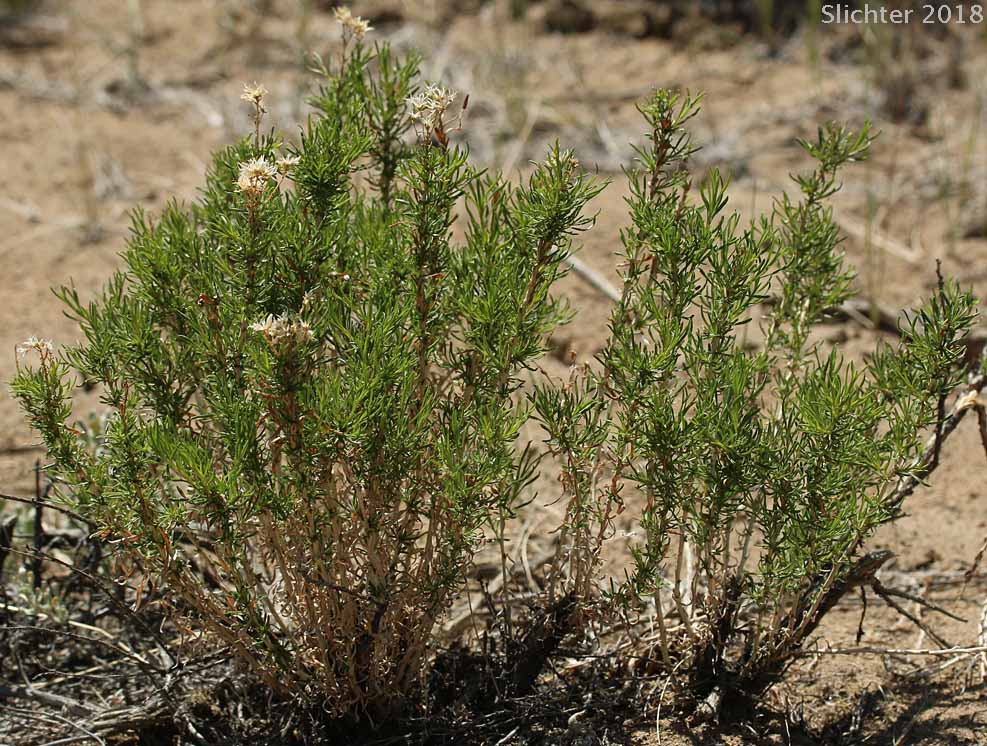 -
- 
Green rabbitbrush (var. viscidiflorus) as seen along the Flatiron Trail, Badlands Wilderness.........May 12, 2018. Note the largely glabrous leaves and twigs.
Characteristics:
Green rabbit-brush is a freely branched shrub from 20-120 cm
tall. The stems are erect, with brittle twigs. The stems are glabrous with stiff
spreading hairs. The leaves are 3-nerved and are linear to linear-oblong, green,
and lack hairs. The leaves are curled or crisp-margined and range from 1-6 cm
long and 0.5-10 mm wide. The leaves are often twisted or curled through one
complete turn.
The yellow flower heads form cymose clusters at the branch tips.
The flower heads are discoid and narrow, consisting of 4-8 (usually 5) flowers.
The involucre is 4-8 mm high. The bracts are strongly 4-ranked withrounded to
obtuse tips, glabrous and sticky. The disk corollas range from 4.5-7 mm long.
Green rabbit-brush flowers from late summer into fall.
Subspecies of Green Rabbitbrush Found in the Pacific Northwest:
subspecies lanceolatus: Young twigs and leaves covered with tiny,
short, spreading hairs. Low plants from 20-50 cm high. Leaves mostly 2-5 mm
wide and 3-5 nerved. Leaves seldom twisted.
subspecies puberulus: Young twigs and leaves covered with tiny,
short, spreading hairs. Low plants from 20-50 cm high. Leaves mostly 1-2 mm
wide and 1-nerved.
subspecies viscidiflorus: Young twigs and leaves usually glabrous
although the leaf margins may be ciliate. Plants variable in height, but may
be up to 120 cm high. Leaves mostly over 1 mm wide with more than 1 vein.
Habitat:
Green rabbitbrush is often found with sagebrush and juniper in dry open places in
the valleys, plains, and foothills. It may occasionally be found to moderate
elevations in the mountains.
Range:
Green rabbitbrush is found from extreme southern British Columbia south along the east
edge of the Cascades to southern California, east to Idaho and south to northern
New Mexico and Arizona.
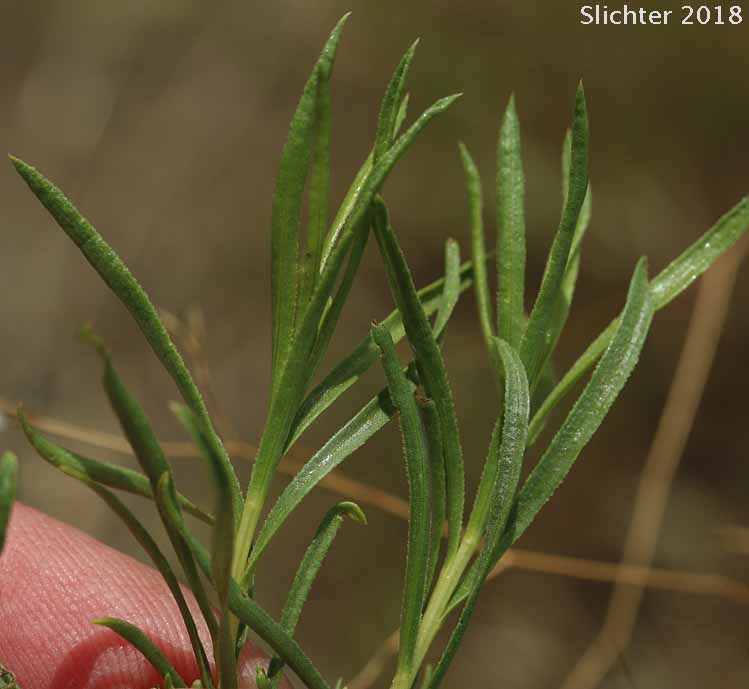
Green rabbitbrush as observed along the Alder Springs Trail #855, Crooked River National Grasslands.......May 11, 2018.
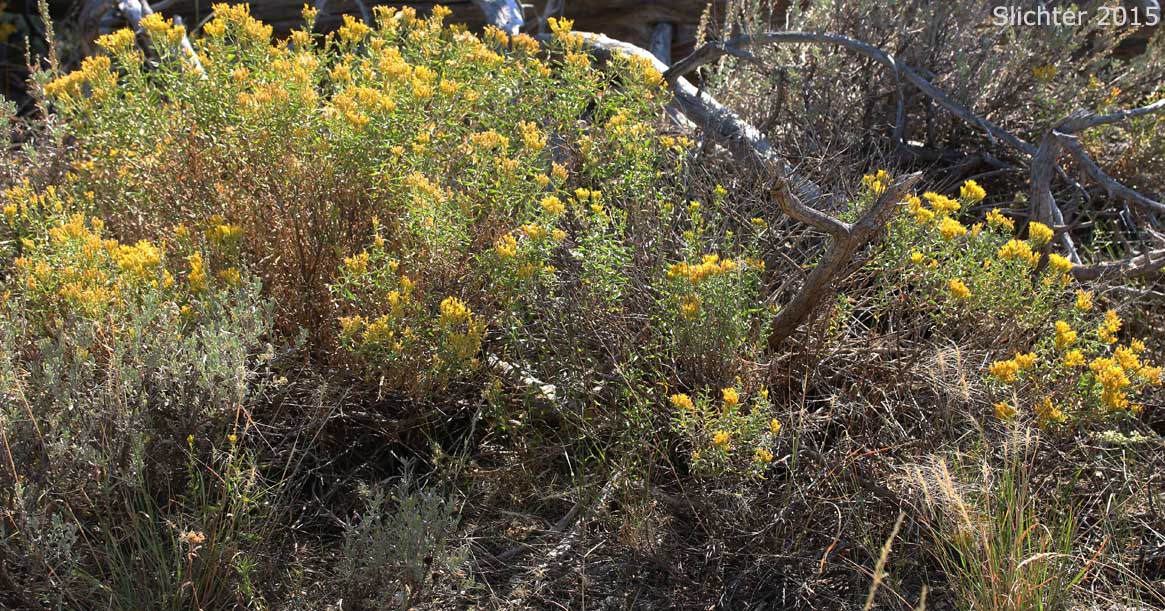 -
- 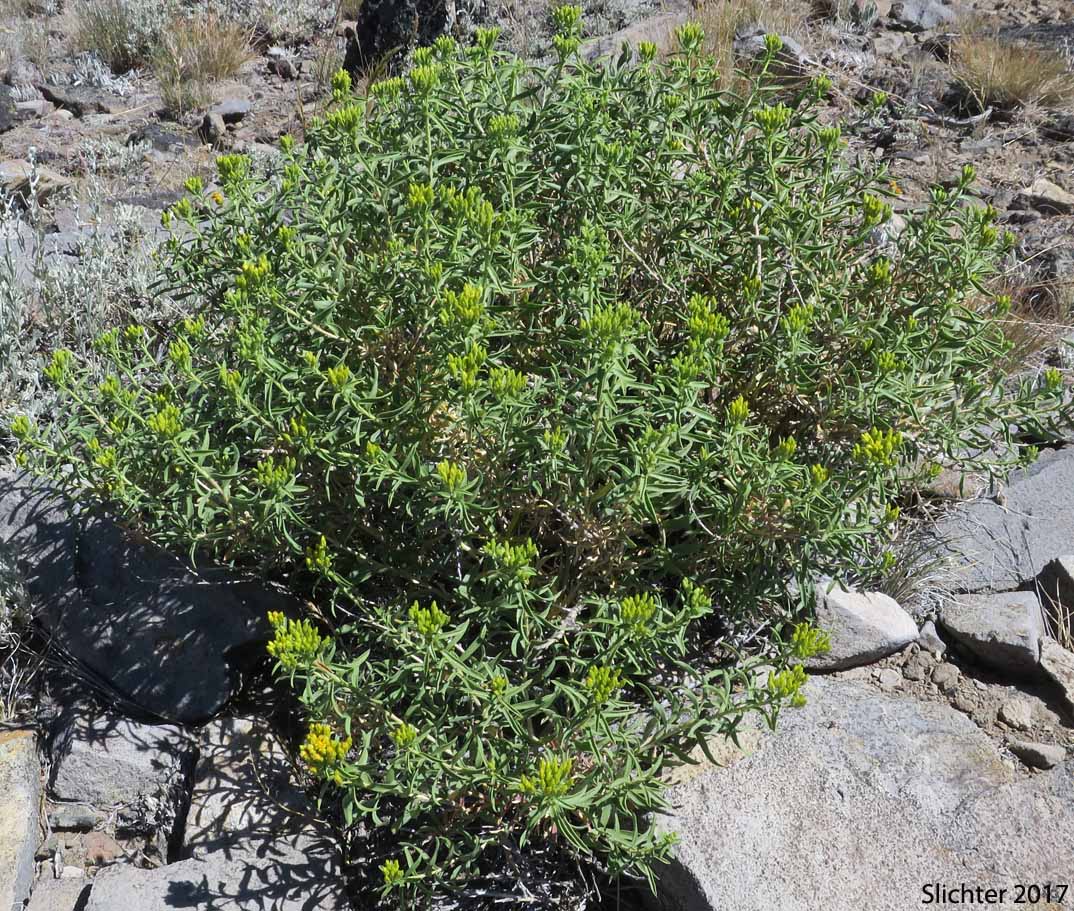
Green rabbitbrush (var. viscidiflorus) as seen (left) along Forest Service Road #16 in uplands at the southern edge of Summit Prairie, Malheur National Forest..........August 10, 2015. The photo at right shows green rabbitbrush as seen from atop Pine Mountain (the hill adjacent to the observatories), Deschutes National Forest........July 11, 2017.
 -
- 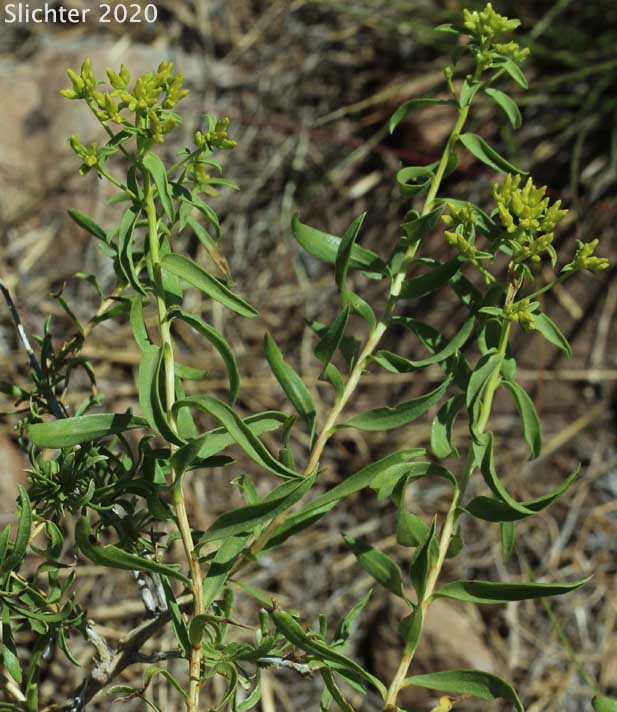
Green rabbitbrush beginning to bloom at the summit of Crane Mountain, Fremont-Winema National Forest........August 1, 2020.
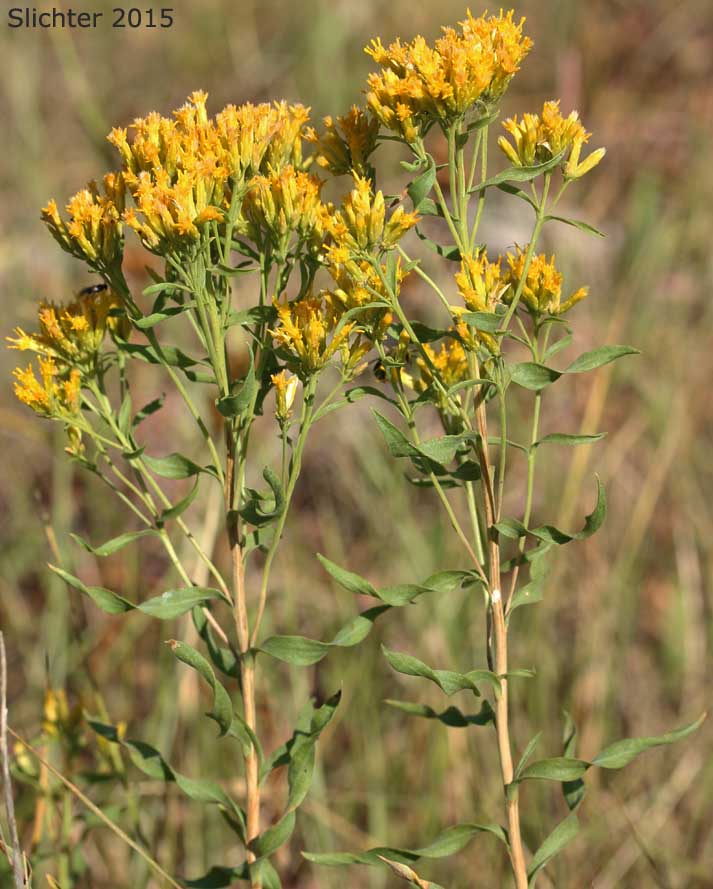 -
- 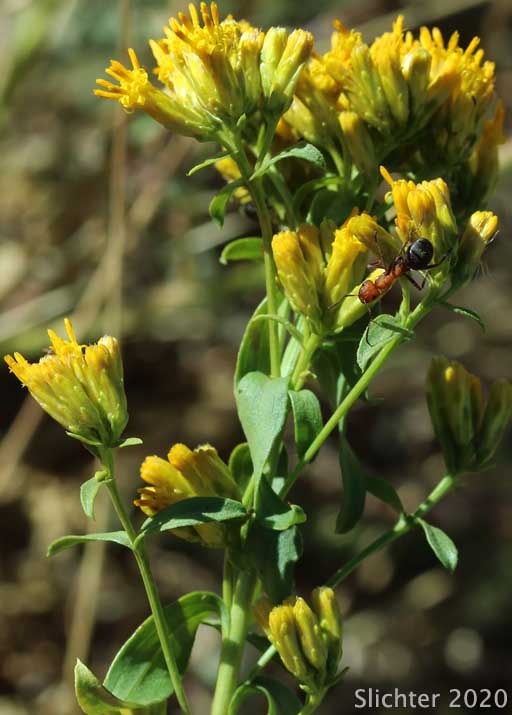
Green rabbitbrush (possibly var. viscidiflorus) as seen at left along Forest Service Road #16 in uplands at the southern edge of Summit Prairie, Malheur National Forest..........August 10, 2015. Note the largely glabrous leaves and twigs. The photo at right shows green rabbitbrush beginning to bloom along Forest Road 3915 in the Bald Hills of the Mt. Bidwell Recreation Area, Fremont-Winema National Forest.......July 31, 2020.
Paul Slichter